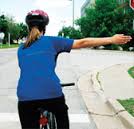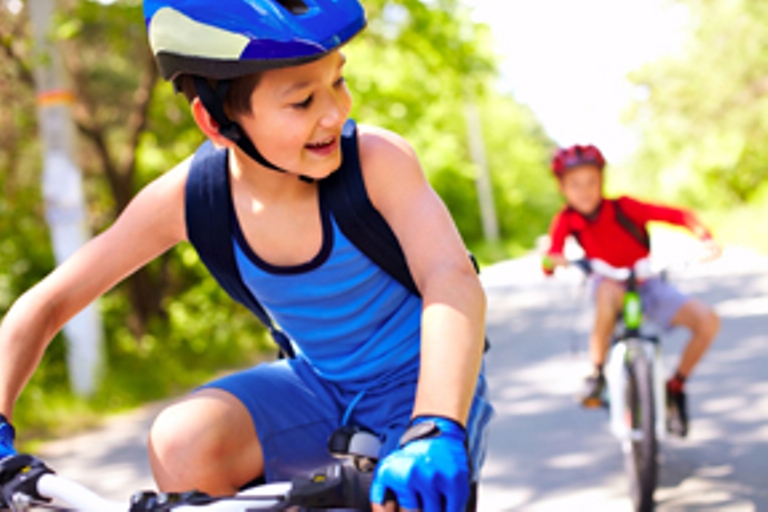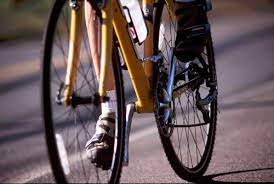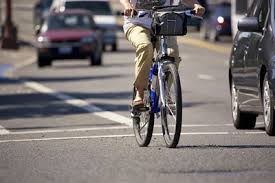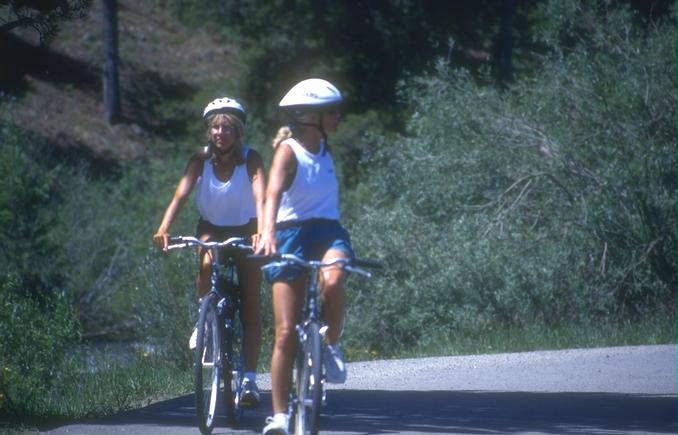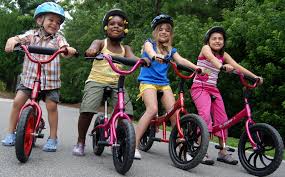On-Street Biking - Sharing the Road
|
 |
Obey Traffic Regulations
Bikes must be driven like other vehicles if they are to be taken seriously by motorists. cyclists are required by law to follow all California traffic laws. |
 |
Be Careful at Intersections
Most accidents happen at intersections. proceed with care. Avoid being in a turn-only lane if you want to go straight through an intersection. In narrow lanes or slow traffic, it may be safer to take the whole lane. |
 |
Use Hand Signals
Signal all turns and stops ahead of time. Look over your shoulder for any traffic, then make your intended move only when iti s safe to do so. |
 |
Keep Both Hands Ready to Brake
You may not stop in time if you brake one-handed. Allow extra distance for stopping in the rain, since brakes are less efficient when wet. |
 |
Lock Your Bike
Lock the frame and rear wheel of your bike to a bicycle rack. If you have a quick release, lock the front wheel also. Do not lock your bike to trees. |
 |
Avoid Road Hazards
Watch out for parallel-slat sewer grates, slippery manhole covers, oily pavements, potholes and construction plates. Cross railroad tracks carefully. |
 |
Make Eye Contact
Confirm that you are seen. Establish eye contact with motorists to insure that they know you are on the road. Look over your shoulder regularly or use a mirror to scan the road behind. Although bicycles have an equal right on the road, be prepared to maneuver for safety. |
 |
Beware of Car Doors
Be wary of parked cars. Motorists can unexpectedly open doors. Be particularly careful if you see a motorist in the car. Ride in a straight line at least three feet away from parked cars. |
 |
Keep Your Bike in Good Repair
Maintain your bike in good working condition. Check brakes regularly and keep tires properly inflated. |
 |
Turning Left: Two Options
- Vehicular Style: Signal your intentions in advance. Move to the left turning lane and complete the turn.
- Pedestrian Style: Ride to the far crosswalk and wait for the light to advance.
|
Tips for Multi-Use Paths
|
 |
Signal to Others
Cyclists: sound your bell or call out a warning when approaching others, then pass safely on the left. Skaters: follow travel rules as per bicyclists. Do not perform trick-skating. |
 |
Stay on the Path
Ride only on designated paths to protect parks, natural areas and yourself. Riding off a designated pathway is dangerous and prohibited in City of Riverside parks. |
 |
Be Careful at Crossings
Look both ways. Cyclists: yield to through traffic at intersections; pedestrians have the right of way. Pedestrians: exercise caution. Be aware of stopping limitations of cyclists and skaters. |
 |
Pedestrian Right-of-Way
Cyclists and in-line skaters must yield to pedestrians. Pedestrians always have the right-of-way. |
 |
Keep to the Right
All path users must keep to the right except when passing or turning left. Pedestrians: move to the right when someone is passing. Move off the path when stopping. Never block the path. |
 |
Use Designated Path
Where designated, cyclists and skaters must ride on the specified path. Don't ride on a pedestrian path. Look both ways at crossings. Cyclists: yield to through traffic at intersections; pedestrians have the right of way. Pedestrians: exercise caution |
